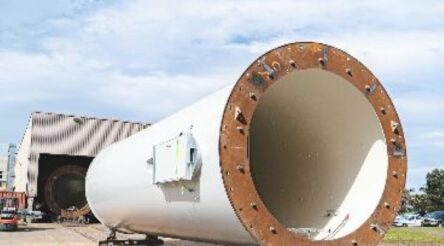Critical minerals manufacturing opportunity – by Shannon O’Rourke

Australia has vast resources of battery minerals and the beginnings of a battery metals value chain, but little in the way of value-added manufacturing. According to Shannon O’Rourke, the time for action to seize the opportunity is now.
The Australian mining industry saved Australia from recession in the GFC and again during the Covid-19 pandemic.
Blessed with a vast mineral endowment, Australia is positioned to play a critical role in the global battery technology revolution, but we need to think differently about the opportunity.
Our mineral reserves should not be viewed as a mining opportunity, but rather as a manufacturing opportunity, that can be leveraged to our national economic, security and strategic advantage.
The traditional pillars that support our economy are becoming increasingly fragile. World economies are shifting their focus to green energy and positioning themselves to capture these growing high-tech industries.
Australia must act now to drive new economic value and job growth
Our high market share in critical minerals, manufacturing capabilities, and global strategic partnerships means we have a significant advantage over other regions.
However, the time to act is running out. Australia’s market share of critical minerals will decline from 50 per cent to 31 per cent by 2030, and the industry is expected to consolidate, making it harder for Australia to capture a foothold.
Our battery industry currently contributes $1.3 billion to our GDP and 6,000 jobs, almost all of which comes from mining raw materials. Demand for batteries is expected to increase 9-to-10-fold over the next decade, with sales to reach US$133-151 billion by 2030. By 2050, in a net zero world, 70 per cent of all renewable energy spend will be on batteries. It is an immense, nation building opportunity.
We at the Future Battery Industries Cooperative Research Centre conservatively estimate that a diversified battery industry could contribute over $7 billion annually to Australia’s economy and support more than 34,000 jobs by 2030.
Now is the time to seize this opportunity and there are some urgent first steps which need to be taken.
The first step is to develop an ambitious National Battery Strategy
Economies including China, the US, the EU, and Japan have successfully adopted national strategies to develop their domestic battery industries.
This approach has led to significant financial support such as the EU committing over $9.6 billion in subsidies for battery production, and the UK providing $740 million in R&D support alone to create the Faraday Institution and UK Battery Industrialisation Centre.
A national strategy sends a strong message that we recognise the economic and strategic importance of the battery industry for jobs and the economy.
A national strategy is essential to coordinate the financial and non-financial levers at the government’s disposal. It will ensure that our support is well targeted – delivered at the right scale and to the areas most important to build an industrial ecosystem.
While Australia may not match the scale of Chinese, European or US investments, a national battery strategy can focus our limited resources on growing a local industry.
It will lay the foundations to leverage strategic international relationships and forge close collaboration between state and federal governments amplifying their efforts to deliver battery investment.
Expanding beyond minerals and resources and establishing a bi-coastal Australian Battery Institute (ABI)
Establishing a bi-coastal Australian Battery Institute (ABI) is critical to successfully execute a national strategy. The ABI will lower barriers to entry and enable Australia to compete by making research, workforce development, and prototyping capabilities available to industry.
In partnership with universities and TAFE, the ABI will equip a local workforce with necessary skills in roles including electricians and mechanics who are trained in electric vehicles and battery energy systems, as well as recycling and the safe handling of batteries.
This investment will open up new specialisations in fields further up the battery value chain including precision chemistry, advanced materials and nano-technology, cell and module manufacturing, power management, battery integration and maintenance. This specialty training is vital to create a workforce capable of advancing high technology battery value chains.
Targeted industry attraction to build a competitive industrial ecosystem
Finally, it will be critical to expand the Modern Manufacturing Initiative with $1 billion per annum for five years to prioritise batteries. The Government’s Low Emissions Technology Plan delivers 100,000 jobs by 2050 by spending $20 billion by 2030.
Our plan delivers one third of the jobs twenty years earlier, for one quarter of the cost. It’s an investment in Australia’s future.
A strategic “whole of value chain” approach must be taken to seed investment across each part of the local battery value chain at a sufficient scale to ensure that the whole ecosystem is competitive and economically sustainable.
The time for action is now
Focusing on visionary policy, cutting edge research and training the workforce of the future, will be essential if Australia is to capture the significant opportunity a diversified battery industry offers.
With a diversified battery industry having the potential to contribute over $7 billion annually to Australia’s economy and support over 34,000 jobs by 2030, now is the time for Australia to act with courage, invest with purpose and lay the foundations for a successful and sustainable domestic battery industry.
Shannon O’Rourke was appointed CEO of the Future Battery Industries Cooperative Research Centre in November 2021. He is a seasoned executive with 25 years’ experience in the energy sector including senior management roles with Woodside, Chevron and industrial research with Rio Tinto.
Picture: Shannon O’Rourke
Subscribe to our free @AuManufacturing newsletter here.
@aumanufacturing Sections
Analysis and Commentary Awards Defence Manufacturing News Podcast Technology Videos










